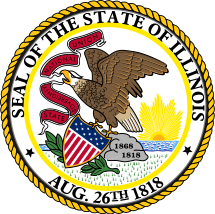Feedback
Data Sources
The website contains merged data from the Illinois State Board of Education (ISBE), National Student Clearinghouse (NSC), and Illinois Department of Employment Security (IDES). The ISBE data contains high school seniors from academic years 2008 through 2012. Those ISBE students were linked to the NSC to gather a picture of their post-secondary college completion, if any. The ISBE students were also merged to IDES' wage records to determine at what industries in Illinois they are working and how much money they are making.
Career outcome measures are derived from longitudinal linking of ISBE student records to quarterly employment and earnings records of approximately 6.2 million workers which are reported by Illinois employers to IDES under the Unemployment Insurance Act. IDES employer records cover nearly 95% of all employment, but exclude the unincorporated self-employed, independent contractors, students working for universities under certain cooperative programs, salespersons primarily paid on commission, federal government workers, railroad workers, and agricultural laborers.
The outcomes developed under this partnership represent only those graduates who entered the labor market (i.e. are not subsequently enrolled during the year for which wage data is being displayed) and are employed within Illinois. Therefore, the information coverage is a subset of all graduates. Additionally, recent graduates with high-demand skills may receive a higher wage from out-of-state employers. Moreover, the annual wage for graduates is available only as a statewide median; wage levels and wage growth vary by regions within the state.
The distinction between students who subsequently enroll in further education, and those who do not, is based on ISBE student records linked to enrollment records from the NSC StudentTracker database. It should be noted that some students may have subsequently enrolled, but may not show up in the NSC match for several reasons, including: the school does not report their data to the NSC, the student or school has a FERPA block on their records, or the student’s record has a major typographical error. That being said, the NSC believes its records cover about 97% of post-secondary institutions in the United States. This project defines subsequent enrollment for a student as having attended a college during the year being displayed in the results (i.e. 3 years after completing a college credential for those that do so, or 3 years after completing high school for those that do not complete a college credential). The distinction between subsequent enrollment and not subsequent enrollment is critical for capturing accurate outcomes, in that their labor market behavior is dissimilar. During their period of subsequent enrollment, individuals may demonstrate more tenuous workforce attachment and lower earnings.
Non-Disclosure
The underlying information supporting the HS2C tool includes student records from ISBE and individual employment and earnings data submitted by Illinois employers to IDES. In the tool, confidentiality requirements are implemented with respect to each career outcome measure. Disclosure of any outcome measure for an academic area or industry requires at least ten persons that meet the criteria of entered the labor market (i.e., not subsequently enrolled) and employed in Illinois. It should be noted that the outcome measures are job-based, and that ten persons could represent as many as 30-40 job observations depending on the measure. Some of the data in the tool is derived from a small number of students and should be interpreted with consideration. Data that is not already publicly available is automatically suppressed if fewer than ten individuals are represented. As an additional step in disclosure proofing, the project team “fuzzed” individual earnings data with an unbiased, random adjustment.




